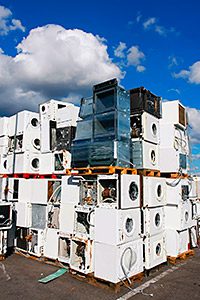
The 14 February 2014 deadline for EU Member States to transpose the new Waste Electrical and Electronic Equipment (WEEE) Recast Directive 2012/19/EU into national WEEE Regulations has now passed.
So far Bulgaria, Denmark, Ireland, Italy, Luxemburg, the Netherlands and the UK have transposed the WEEE Recast Directive. Meanwhile, draft legislation to transpose the WEEE Recast has been released by 18 EEA Member States.
In the UK the new WEEE Regulations were adopted on 7 December 2013 and came into force on 1 January 2014. They provide reduced obligations for small producers placing less than 5 tonnes of Electrical and Electronic Equipment (EEE) on the market in the previous year, and introduce a “target and compliance fee” model to replace the trading of B2C WEEE evidence by compliance schemes.
A widening of scope is in evidence, to include all electrical and electronic equipment, which shall be classified within six categories, instead of the existing 10. The current product scope of 10 categories of EEE will remain in place during the transitional period 13 August 2012 to 14 August 2018 (with the addition of photovoltaic panels (PV) in Category 4: consumer equipment).
Article 2 of the new WEEE Recast Directive states that an open scope of products within six EEE categories will then apply from 15 August 2018. These new categories are found in Annex III of the WEEE Recast Directive, and include temperature exchange equipment, lamps and screens (well, to be more precise: “Screens, monitors, and equipment containing screens having a surface greater than 100 cm2”), among other things.
Member States will have to meet tougher WEEE collection targets. From 2016, Article 7 of the WEEE Recast sets WEEE collection rates which will be considerably harder to meet than the current target of 4kg per person. From 2016, Member States must achieve a collection target of 45% of the average annual weight of EEE (both B2B and B2C) placed on the market in the three preceding years. These annual collection targets will then rise further in 2019 to a rate of 65% of the average annual weight of EEE placed on the market in the three preceding years or alternatively 85% of WEEE generated in that Member State (these targets will apply to the new WEEE categories).
The Directive also harmonises the registration and reporting requirements across EU member states, which will allow further integration of WEEE collection, recycling and reporting.
Additional aspects include support for tools that will help counter illegal waste exports.







